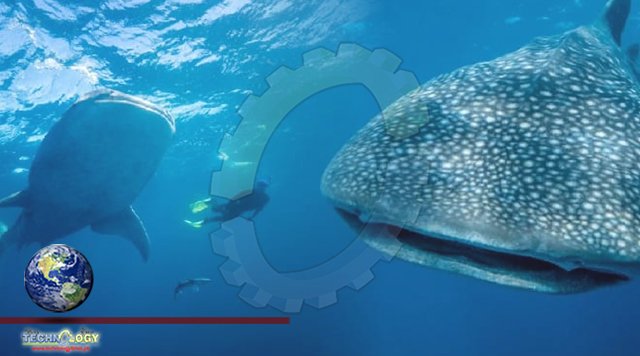Marine biologists have discovered that whale shark consume plants, making the famous species the largest omnivore in the world.

Whale sharks consume plants, according to marine biologists, making the iconic animal the world’s biggest omnivore. Whale sharks are filter feeders, and in Western Australia’s Ningaloo Reef, they have long been seen consuming krill. However, scientists found that whale sharks in the reef were consuming a lot of plant material when they analyzed biopsy samples from the animals. “This causes us to rethink everything we thought we knew about what whale sharks eat,” said Australian Institute of Marine Science fish biologist Dr. Mark Meekan. “And, in fact, what they’re doing out in the open ocean.” The discovery makes whale sharks, which have been measured up to 18.8 meters (61.7 feet) in length, the biggest omnivores in the whole world “In the sea, we always thought the animals that have gotten really big, like whales and whale sharks, were feeding one step up the food chain on shrimp-like animals and small fishes. Turns out that maybe the system of evolution on land and in the water isn’t that different after all.” The study was recently published in the journal Ecology. The researchers gathered samples of potential food sources at the reef, ranging in size from small plankton to giant seaweed, in order to determine precisely what the whale sharks were consuming. Then they compared the amino and fatty acids in the whale sharks to those in the plankton and plant material. Dr. Meekan said that substances found in Sargassum, a form of brown seaweed common to Ningaloo that breaks off the reef and floats at the surface, were present in the whale shark tissue.
“We think that over evolutionary time, whale sharks have evolved the ability to digest some of this Sargassum that’s going into their guts,” he said. “So, the vision we have of whale sharks coming to Ningaloo just to feast on these little krill is only half the story. They’re actually out there eating a fair amount of algae too.” CSIRO Oceans and Atmosphere organic biogeochemist Dr. Andy Revill, who analyzed the whale shark tissue using compound-specific stable isotope analysis, said the technology allowed scientists to study what animals were used for energy and growth, not just what they were eating. “Something like a whale shark, which swims through the water with its mouth open, is going to ingest a lot of different things,” he said. “But you don’t know how much of that has been used by the animal and how much just goes straight out the other end. Whereas stable isotopes, because they’re actually incorporated into the body, are a much better reflection of what the animals are actually utilizing to grow.” Biological oceanographer Dr. Patti Virtue, from the University of Tasmania’s Institute for Marine and Antarctic Studies, said she was surprised by the whale shark’s biochemical signature.
Source: This news is originally published by scitechdaily